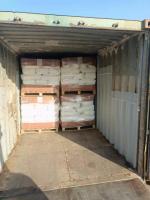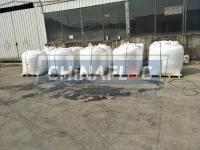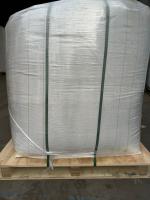Our Products
Flocculant / cationic flocculant(FO4350 FO4400)equivalent model can be replaced by Chinafloc C

Cationic flocculants are highly charged water-soluble polymers used primarily to neutralize and agglomerate suspended solids in water and wastewater streams. They carry a positive charge, which interacts with the negatively charged colloids, organic matter, and fine suspended particles commonly found in effluents. Among the wide range of commercial cationic flocculants, FO 4350 and FO 4400 are well-known formulations, designed to provide effective solid–liquid separation, sludge dewatering, and clarification across both municipal and industrial water treatment processes.
2. General Mechanism of Action
The effectiveness of cationic flocculants FO 4350 and FO 4400 stems from two simultaneous mechanisms:
-
Charge Neutralization – Their positive charges counteract the surface charges of negatively charged particles (such as clays, organics, and colloids), causing destabilization.
-
Polymeric Bridging – The long molecular chains create bridges that link multiple destabilized particles together, forming larger and denser flocs that rapidly settle or can be easily filtered.
These dual functions allow FO 4350 and FO 4400 to significantly enhance the efficiency of clarification and dewatering systems.
3. Applications in Municipal Wastewater Treatment
a. Primary Clarification
In municipal wastewater plants, FO 4350 and FO 4400 are dosed in primary clarifiers to improve the removal of suspended solids, fats, oils, and greases. By accelerating sedimentation, they enhance the overall treatment efficiency while reducing the organic load entering secondary biological treatment.
b. Secondary Clarification
After biological treatment, cationic flocculants are used to improve the separation of biomass flocs. They help in thickening the biological sludge and prevent the escape of fine suspended particles into the treated effluent.
c. Sludge Dewatering
A major application is in the sludge handling stage. FO 4350 and FO 4400 condition municipal sludge to improve water release during dewatering on belt filter presses, centrifuges, or screw presses. The result is drier cake solids, reduced sludge disposal costs, and higher operational efficiency.
4. Applications in Industrial Wastewater Treatment
a. Food and Beverage Industry
In food processing effluents, especially dairy, meat, or beverage plants, effluent streams are rich in organic matter, fats, and proteins. FO 4350 and FO 4400 effectively coagulate and flocculate these colloids, improving clarity and lowering biochemical oxygen demand (BOD).
b. Textile and Dye Wastewaters
These flocculants are widely used to remove colorants, dyes, and chemical residues from textile effluents. Their cationic charge helps capture anionic dyes and surfactants, resulting in improved color removal and compliance with discharge standards.
c. Pulp and Paper Mills
Cationic flocculants play an essential role in clarifying paper mill whitewater, removing fibers, fillers, and fines. FO 4350 and FO 4400 aid in fiber recovery, water reuse, and effluent treatment, ensuring efficient closed-loop systems.
d. Chemical and Petrochemical Effluents
In the chemical industry, wastewater streams often contain finely dispersed solids and oil emulsions. These flocculants help break emulsions, aggregate solids, and accelerate phase separation for effective treatment.
e. Mining and Mineral Processing
Cationic flocculants are applied in tailings management, where they promote faster sedimentation of fine mineral particles. They are also used in clarifying process water for reuse, reducing environmental impact and water consumption.
5. Drinking Water Treatment
Although more commonly used in wastewater, FO 4350 and FO 4400 also contribute to drinking water treatment in certain cases, particularly where raw water sources contain high turbidity, humic acids, or color. When used in combination with inorganic coagulants like alum or ferric salts, they enhance floc formation and filtration efficiency.
6. Benefits of FO 4350 and FO 4400
-
Improved Clarification – Faster settling of suspended solids, resulting in clearer effluent.
-
Reduced Dosage of Inorganics – Minimizes the reliance on alum or ferric salts, lowering sludge volumes.
-
Enhanced Dewatering – Produces drier sludge cakes, lowering handling and disposal costs.
-
Versatility – Effective across diverse industries and water chemistries.
-
Operational Efficiency – Shorter settling times and improved throughput in clarifiers and presses.
-
Economic Savings – Lower chemical costs and reduced sludge disposal translate into cost-effective operation.
7. Factors Affecting Performance
The performance of FO 4350 and FO 4400 can vary depending on:
-
pH of the system – Optimum performance usually lies in the neutral to slightly acidic range.
-
Dosage – Overdosing can lead to restabilization of particles; jar tests are essential for dosage optimization.
-
Mixing energy – Proper dispersion ensures maximum particle-polymer contact.
-
Water chemistry – Presence of competing ions, dissolved organics, or extreme alkalinity may influence flocculation efficiency.
8. Environmental and Regulatory Considerations
Both FO 4350 and FO 4400 are designed to comply with environmental regulations for water treatment additives. When properly applied, they significantly reduce suspended solids, turbidity, BOD, and COD in effluents, ensuring compliance with discharge standards. Furthermore, by producing drier sludge cakes, they contribute to reduced landfill volumes and improved environmental sustainability.
9. Comparative Use Between FO 4350 and FO 4400
While both belong to the same family of cationic flocculants, the distinction generally lies in charge density and molecular weight:
-
FO 4350 – Typically designed with a medium charge density, suitable for general municipal sludge dewatering and moderate industrial effluents.
-
FO 4400 – Often formulated with a higher charge density and molecular weight, making it more effective in difficult-to-treat effluents, oily wastewaters, or sludges requiring stronger conditioning.
The selection depends on the specific wastewater characteristics and performance goals.
10. Conclusion
The applications of cationic flocculants FO 4350 and FO 4400 cover a broad range of municipal and industrial treatment needs, with their primary roles being coagulation, flocculation, clarification, and sludge dewatering. In municipal plants, they improve sedimentation and sludge handling, while in industries such as food processing, textiles, pulp & paper, chemicals, and mining, they are invaluable for removing suspended solids, reducing color, and improving water quality.
Their efficiency in charge neutralization and polymer bridging makes them versatile tools for water treatment professionals. Furthermore, their ability to produce clearer effluents and drier sludge supports both regulatory compliance and environmental sustainability.
By combining performance reliability with cost savings and operational ease, FO 4350 and FO 4400 remain key formulations in the field of water and wastewater management, ensuring cleaner discharges and more efficient treatment systems.





517_small.jpg)